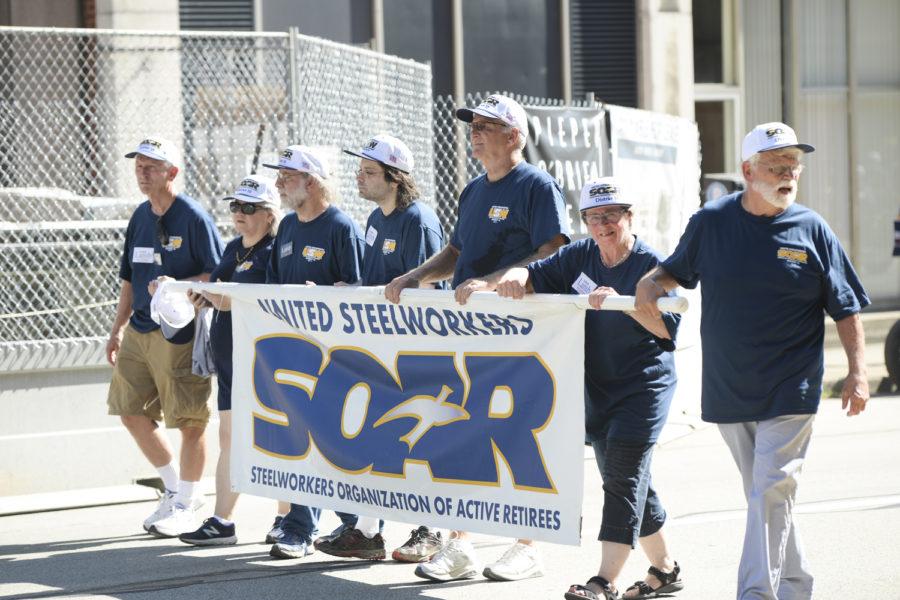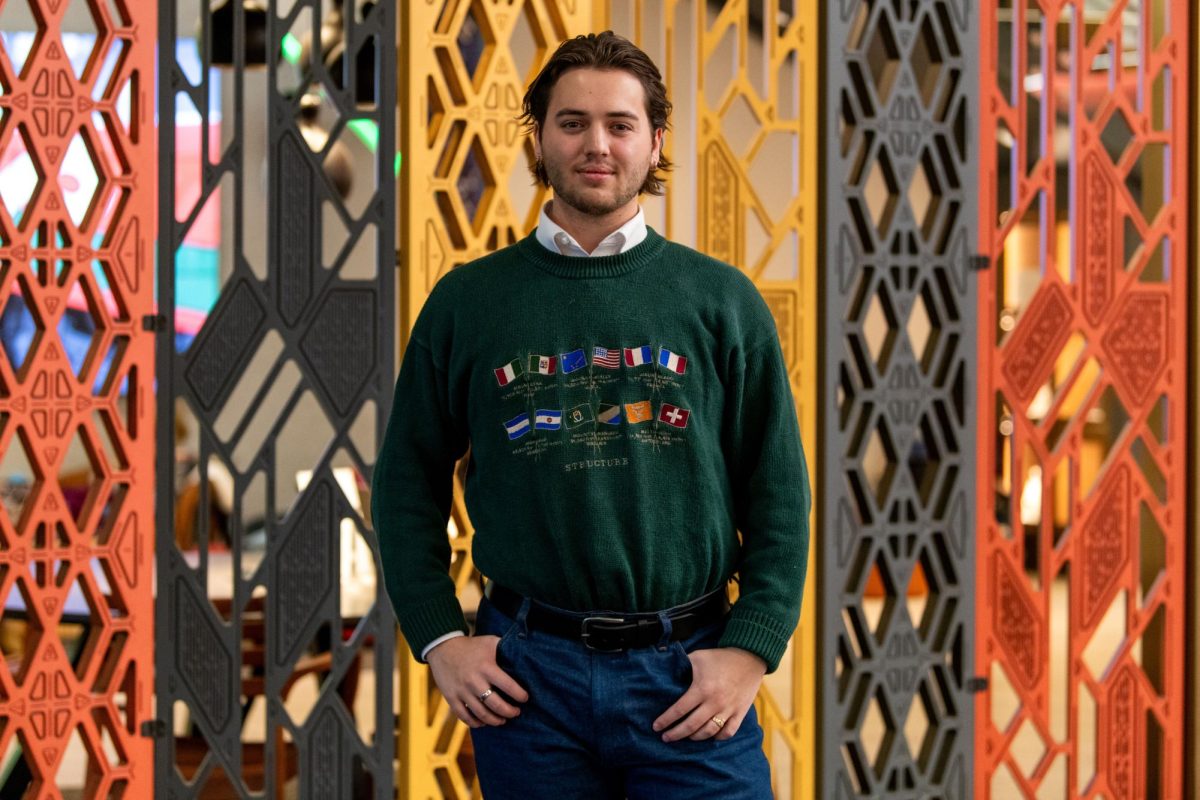Editorial: Remember ongoing efforts of PA labor unions
Photo by Jon Kunitsky | Staff Photographer
Steelworkers Organization of Active Retirees marches in Pittsburgh’s Labor Day parade Monday morning.
September 4, 2018
Thousands of people — including former Vice President Joe Biden — braved temperatures well into the 90s yesterday to participate in this year’s Labor Day parade in downtown Pittsburgh. Schools and businesses in the area took the day off as part of a tradition dating back to the late 19th century.
It’s no coincidence that Pittsburgh has one of the largest Labor Day parades in the country. The City was built upon a large labor population, historically from the steel industry, and today there is still a strong union presence — there are about 900,000 American Federation of Labor and Congress of Industrial Organizations — or AFL-CIO — members in Pennsylvania, according to the organization’s website. The first Monday in September serves to remind us of the challenges and setbacks labor unions continue to face today as they work to improve the lives of their members.
The holiday got its start in the late 1800s amidst a culture of 12-hour workdays seven days a week, often involving taxing physical labor in unsafe conditions with low wages. New York City workers organized a strike day in early September of 1882 to demand higher pay and eight-hour work days. Ten thousand workers showed up, leading to more similar shows of force by labor unions across the country and the eventual declaration of Labor Day as a national holiday by President Grover Cleveland in 1894.
Unions have long benefited their members. According to 2016 data by the Bureau of Labor Statistics, union workers earn 27 percent more than non-union workers, and 79 percent of union workers receive employer health insurance as opposed to 49 percent of non-union workers. 83 percent of union workers get paid sick leave while only 62 percent of non-union workers receive the same benefit.
Industrial workers in the steel, tin and iron sectors were major participants on the labor union scene for many years. But the steel industry is no longer Pittsburgh’s main industry — in fact, as of 2015, heavy manufacturing only accounts for 12.3 percent of the area’s workforce. Some of the largest employers in the area today are found in the health, government and education sectors, some of whom gave their employees Labor Day off.
However, much of the staff at Pennsylvania’s largest employer, UPMC, couldn’t join in yesterday’s festivities — they were at work. Ironically, on a holiday meant to celebrate laborers in all sectors of the economy, the lowest-paid workers at UPMC continue to fight for representation by a labor union.
Service Employees International Union (SEIU) Healthcare PA has pressured UPMC for the past six years to create a labor union to represent lower-income employees at UPMC, as well as to raise the hospital minimum wage to $15 an hour — something that has since been accomplished, but that UPMC calls an internal decision, not a victory for SEIU.
SEIU’s strategy to establish a lower-income hospital labor union was to insert it as an amendment to the plans to create a new UPMC Vision and Rehabilitation Hospital in Uptown. Mayor Peduto opposed the amendment because the plans were “not about tangential issues that third parties may want to try to attach to them” — they were about land use.
The deal struck earlier this month contains no commitment to create a new labor union within UPMC, but union supporters have used Twitter in the past few weeks to voice their continued support in SEIU’s efforts.
The City of Pittsburgh isn’t the only official body to fight back against labor unions in the recent past. Pitt told the Pennsylvania Labor Relations Board earlier this year that it won’t support the petition by graduate students to hold a union election, arguing that graduate students aren’t employees. The graduate students are fighting for the chance to have a voice in University decisions that could affect them and their working conditions.
A day off from school or work for Labor Day can serve as a nice farewell to summer. But the thousands of people who showed up for this year’s parade know the holiday isn’t just a relic of past labor efforts — it’s a reminder of the ongoing effort by unions to be heard, and in some cases, to exist at all.








